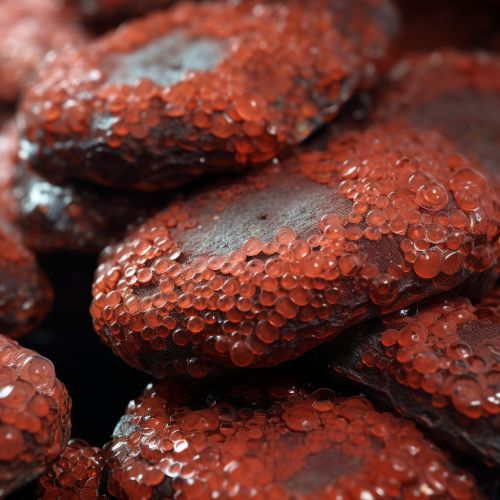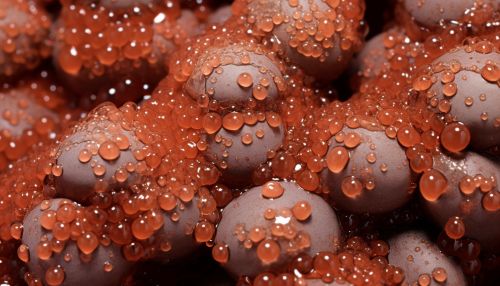Rubrobacter xylanophilus
Taxonomy and Naming
Rubrobacter xylanophilus is a species of bacteria within the genus Rubrobacter. The genus name Rubrobacter is derived from Latin, with 'rubro' meaning red and 'bacter' meaning rod. This is in reference to the reddish pigmentation of the colonies of these bacteria. The species name xylanophilus is also derived from Latin, with 'xylano' referring to xylan, a type of polysaccharide, and 'philus' meaning loving. This refers to the bacterium's ability to degrade xylan.
Description and Significance
Rubrobacter xylanophilus is a thermophilic bacterium, meaning it thrives in high-temperature environments. It is also radiation-resistant, making it one of the few known organisms capable of surviving in extreme conditions such as those found in nuclear reactors or during space travel. This unique combination of traits has led to R. xylanophilus being studied for potential applications in biotechnology and astrobiology.
Physiology and Biochemistry
Rubrobacter xylanophilus is a Gram-positive bacterium, meaning it has a thick peptidoglycan cell wall that retains the violet crystal violet stain used in the Gram staining method. It is a non-motile, non-spore-forming, and rod-shaped bacterium.
The bacterium is capable of metabolizing a wide range of substrates, including glucose, fructose, and xylan. It can also utilize nitrate as an electron acceptor, a trait that is relatively rare among thermophiles. The bacterium's ability to degrade xylan, a complex polysaccharide found in plant cell walls, is particularly noteworthy. This trait could potentially be harnessed for industrial applications, such as the production of biofuels from plant biomass.
Genome
The genome of Rubrobacter xylanophilus has been sequenced, revealing a wealth of information about the bacterium's biology and its adaptations to extreme environments. The genome is composed of a single circular chromosome and does not contain any plasmids. It is relatively small in size, with a total length of approximately 3.2 million base pairs. The genome encodes for a variety of proteins involved in DNA repair, which likely contribute to the bacterium's radiation resistance.
Ecology
Rubrobacter xylanophilus is typically found in high-temperature environments, such as hot springs and geothermal soils. It is also capable of surviving in environments with high levels of radiation. This ability to withstand extreme conditions has led to R. xylanophilus being considered a model organism for studying life in extreme environments, both on Earth and potentially on other planets.
See Also


